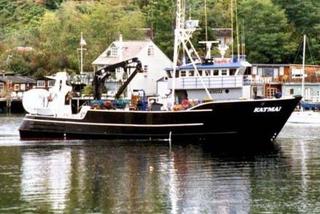NTSB Calls for Stricter Safety Standards on Smaller Boats

Wednesday, November 09 2011
As most Alaskans and Discovery Channel fans know, commercial fishing is an exceptionally dangerous job. Now, the National Transportation and Safety board has released a series of recommendations meant to reduce the number of deaths in the fishing industry.
The NTSB report was released yesterday, and it calls on the Coast Guard to set stability standards for smaller boats. The document suggests periodic stability inspections for vessels 79 feet and under, and it cites the 2008 sinking of the F/V Katmai in the Bering Sea as an example of limited stability training and lack of oversight contributing to multiple fatalities.
NTSB also recommends that personal flotation devices, or PFDs, be worn whenever a person is on the deck of a fishing vessel. Jennifer Lincoln heads the National Institute of Occupational Safety and Health field station in Alaska, and she says that a number of fishing companies like Trident and American Seafoods already have similar PFD policies in place.
“There are some companies, some owners and operators, that have made this step and said, ‘Yeah, we want our guys to wear PFDs all the time,” says Lincoln.
Training is also emphasized in the report. NTSB recommends that fishermen receive certified safety training before going out to sea. Lincoln says that incidents like the recent fire aboard the freezer longliner Alaskan Leader show the value in having crews that are prepared to respond to emergencies.
“The training that those crews go through regarding putting out fires on vessels is an excellent example of how training has saved those boats and all the lives on those vessels,” says Lincoln.
According to the United States Department of Labor, nearly 160 fishermen per 100,000 died on the job on average in the past two decades. The average rate across all occupations is just 4 deaths per 100,000 workers.



